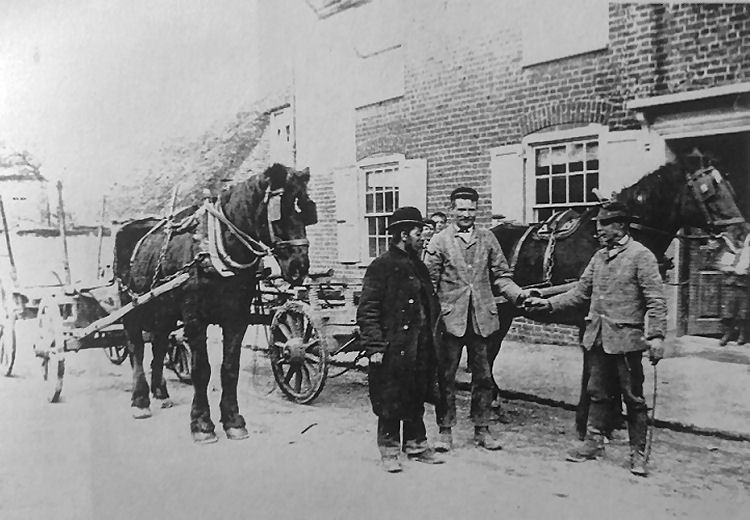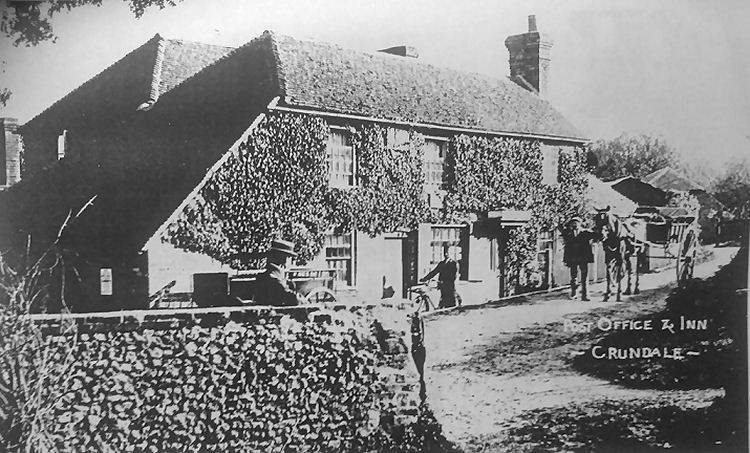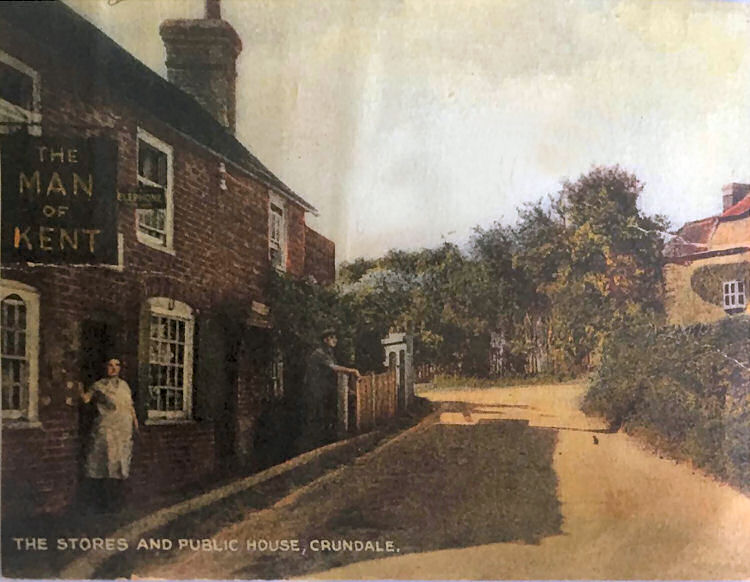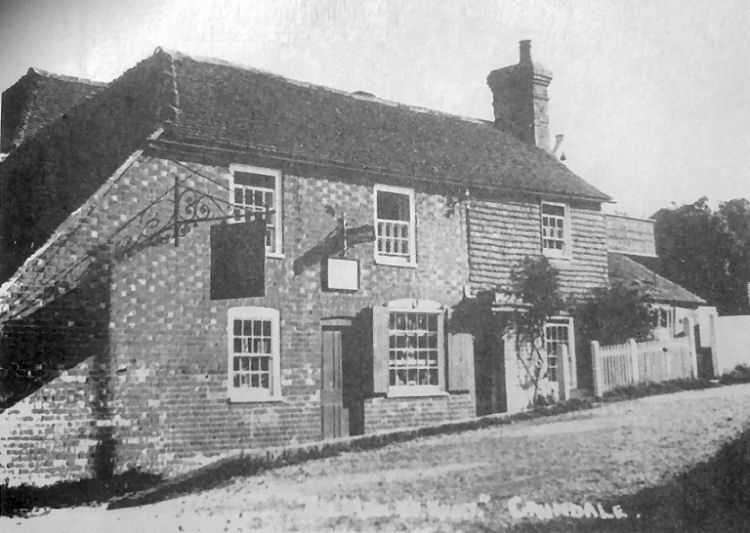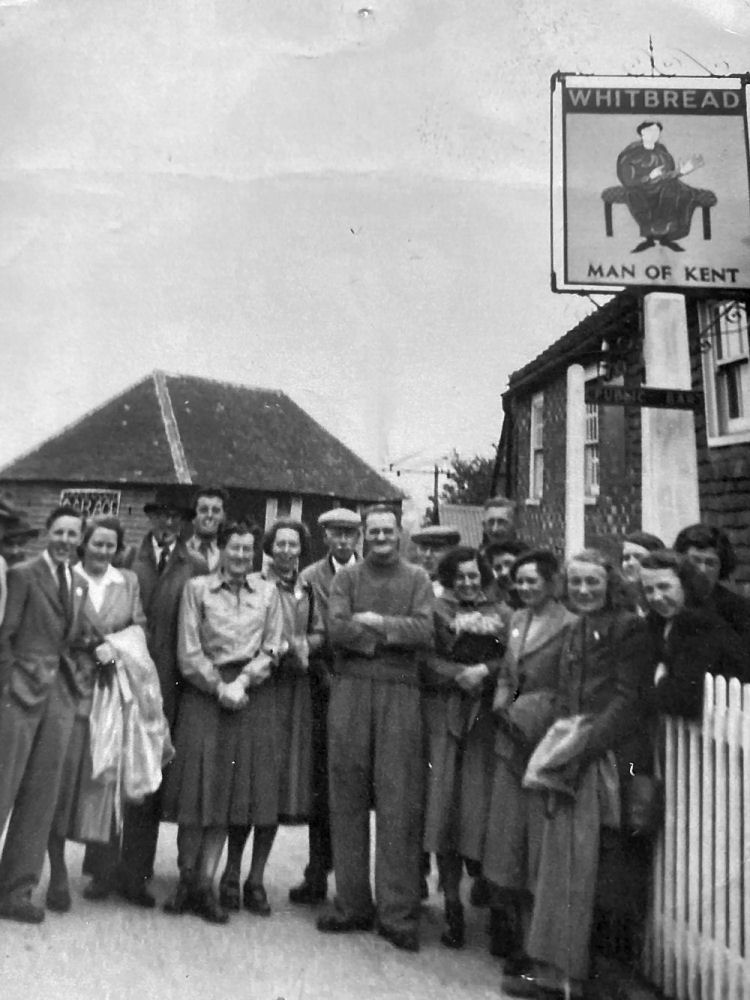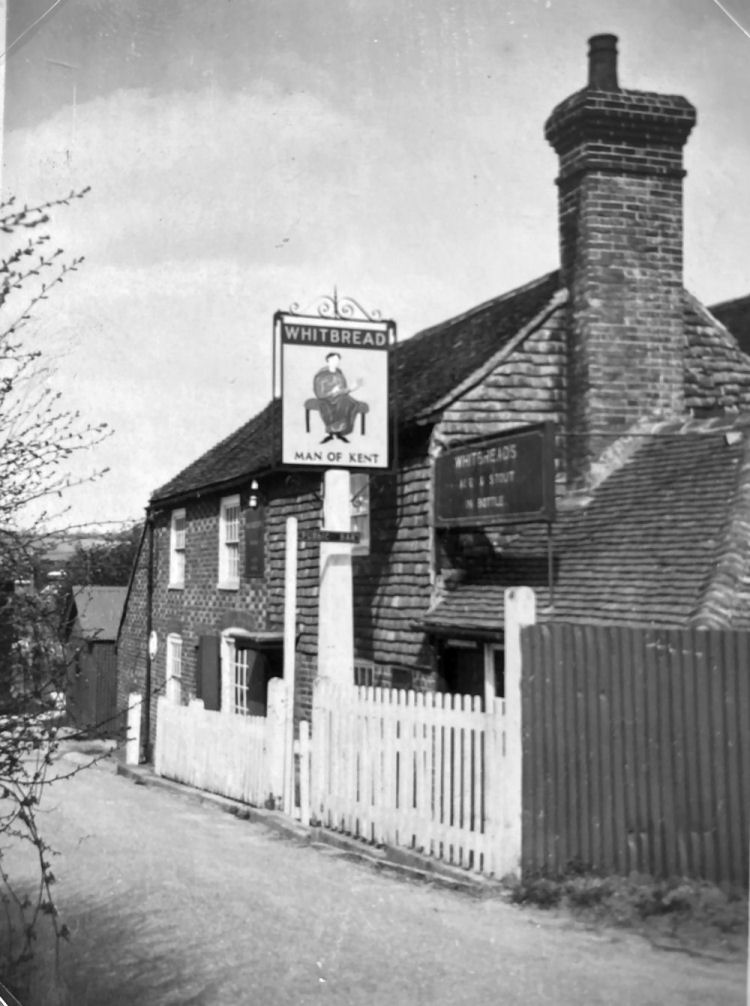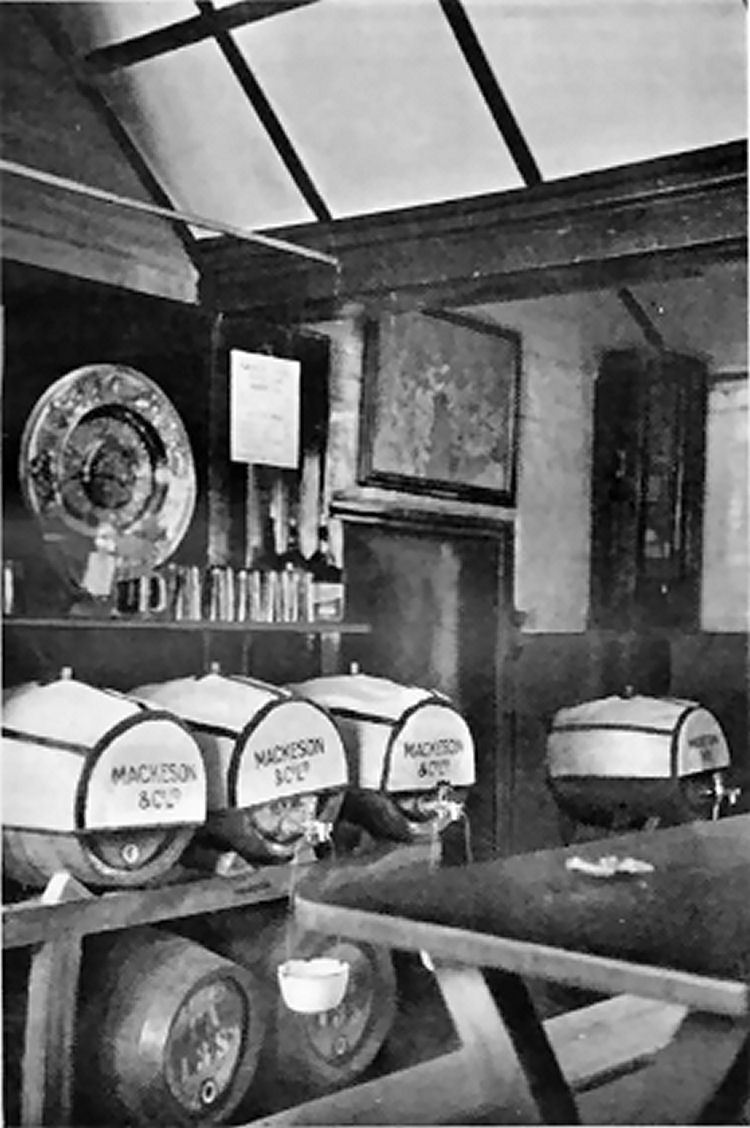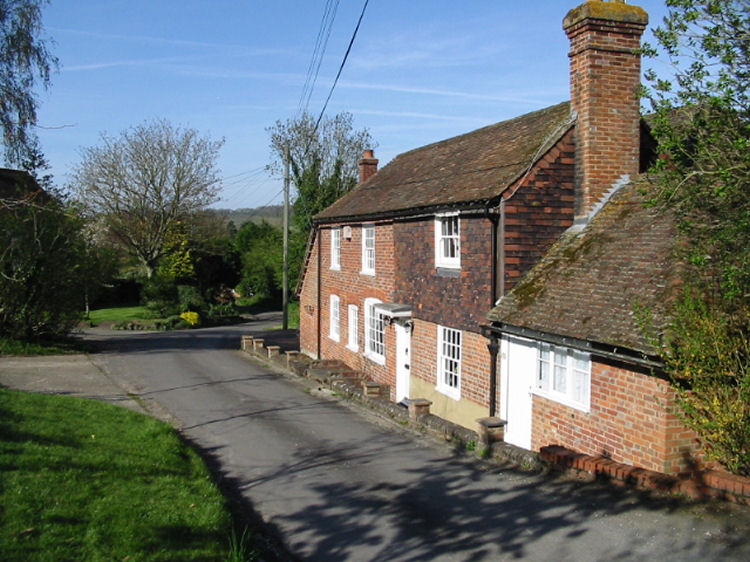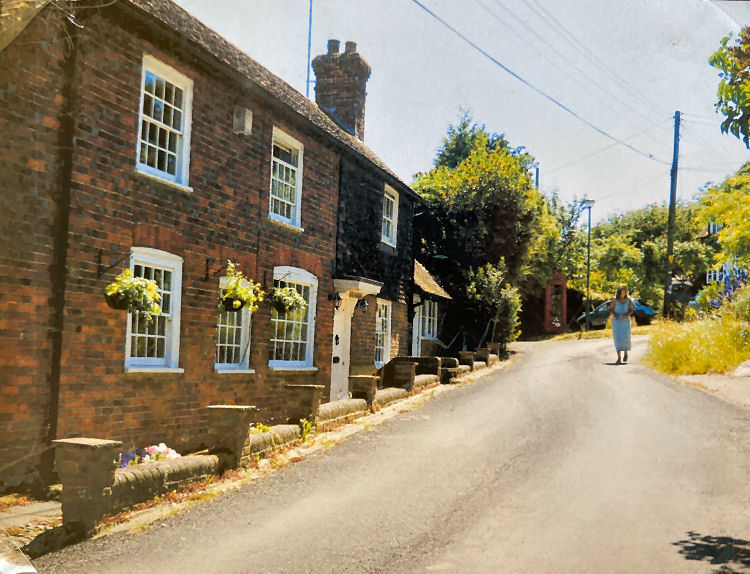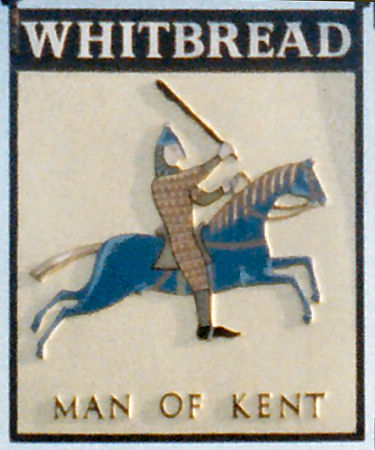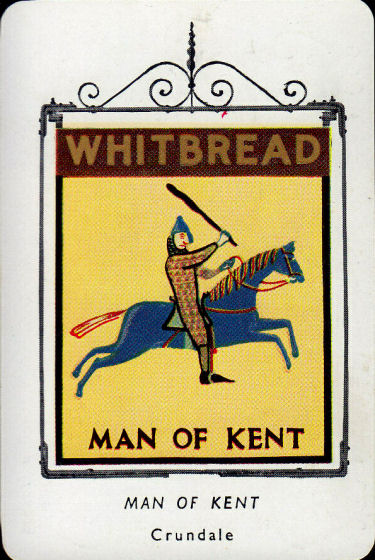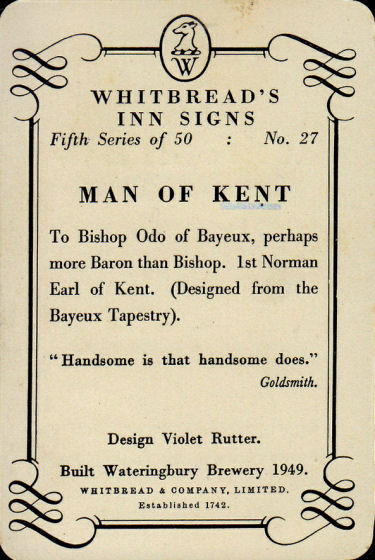|
The Old Man of Kent, Crundale.
When George Perkins bought what is now the Old Man of Kent in
February 1801 the £58 he paid also brought him about three quarters
of an acre on the opposite side of the road where a house had
formerly stood. This had burnt down about the 1750's and Well
Cottage was later built on the same site. The land also had a barn but
this was pulled down around 1970 and replaced with a house.
The purchase deed describes George as being “of Crundall, servant”
but further detail can be found in the will of the Rev. Sir Edmund
Filmer who died in June 1810 and bequeathed £50 to George Parkin his
“late servant”. Before inheriting his Baronetcy, Edmund Filmer had
been Rector of Crundale and he it was who married George Parkin to
Mary Noyes at Crundale in November 1800. It seems likely that George
Parkin, (apparently called Perkins in the purchase deed of 1801),
had worked at the Rectory and probably “lived in” there. His bride's
father was tenant farmer at Winchcombe so perhaps it was her family
who provided funds to buy what later became the Man of Kent. George
and Mary do not seem to have lived in the newly bought house and
neither do they appear to have had any children.
Not long after inheriting the £50 from Sir Edmund Filmer, George
became the tenant at Trimworth Manor renting the house and its 250
acres from the Filmer family. The costs of acquiring stock and
equipment may have been met by his mortgage on the Old Man of Kent
and the ground opposite which he took out in 1812 raising £100 at
the rate of 5%. However this money could have been used to extend
the house for a later mortgage and further advance in June 1839 tell
us that the house had now been altered. Soon after George bought it
in 1801 it was home to the Reynolds family but by 1839 there were
two tenants: George Thomsett and William Pollard.
George Thomsett is mentioned in the Kentish Gazette of 11 July 1843
which contains a report on the recent East Kent & Canterbury Cattle
Show. Various prizes were awarded to “Labourers and Servants” and
amongst this number was:
To Geo. Tomsett, servant to Mr G. Parkin of Crundale, having had 12
children and brought
up 10 without any medical or parochial relief. £4.
In all likelihood two children had died in infancy and in reality it
was quite an achievement to have ten children out of twelve survive
at that time.
The parish had a doctor available for its poor and the Vestry Book
for November 1828 shows:-
W. Wildish of Wye to be appointed Surgeon to the parish with a
salary of £16.
Then in March 1833 a cheaper option was found:-
Mr Glendinings' tender of Medical assistance, medicins & surgery for
twelve pounds for the
year beginning March 25 1833 …. was accepted
but apparently the doctor had not been required by the Thomsett
family.
]George and Hannah Thomsett remained at the Old Man of Kent until the
1850's when, with their children growing up and leaving home, they
moved a little further down the road either to a part of what is now
Glenwood Farm or to one of a group of cottages which stood behind
that house but which have been gone for nearly a hundred years.
These cottages were known as The Barracks and around the time of the
First World War one of them was home to Ned Thomsett whose wife was
the local midwife.
What is now the Old Man of Kent first became a public house late in
the 19th century but it was also the local shop and bakery. It was
eventually purchased by Whitbread's and when they sold it in 1957 it
was on the condition that it should never again be used as licensed
premises.
The picture of the Tap Room at the Man of Kent is taken
from the book “Inns of Kent” which was published in 1948 for
Whitbread's.
|
